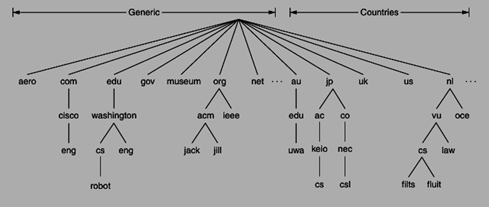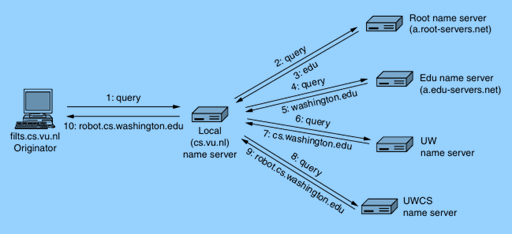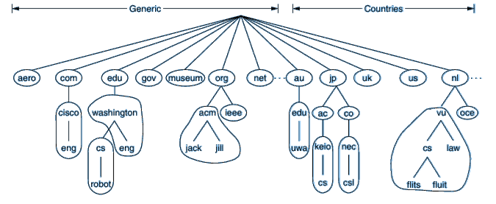Domain Name System (DNS)
The Domain Name System (DNS) is a fundamental component of the internet, acting as the phonebook that translates human-friendly domain names into machine-readable IP addresses. While it’s possible for programs to refer to web pages, email addresses, and other resources using numerical IP addresses, these are often difficult for people to remember. For instance, accessing a company’s website via an IP address like 128.111.24.41 is not practical. If the company changes its web server to a different machine with a new IP address, everyone would need to be informed of this change. To address these challenges, DNS was developed to provide a more user-friendly naming system.

The Evolution of DNS
In the early days of the ARPANET, a simple text file called hosts.txt was used to map computer names to their IP addresses. Each host would download this file nightly. While this method worked for a small network of a few hundred machines, it quickly became impractical as the internet expanded to millions of devices. The size of the file would grow unwieldy, and conflicts in host names would arise without centralized management. To solve these issues, the DNS was introduced in 1983, establishing a hierarchical, domain-based naming scheme and a distributed database system.
How DNS Works
At its core, DNS is designed to map domain names to IP addresses. When an application needs to resolve a domain name, it calls a library procedure known as a resolver. This resolver sends a query to a local DNS server, which looks up the name and returns the corresponding IP address. The communication between the resolver and the DNS server typically occurs via UDP packets.

The DNS Name Space
Managing a vast and ever-changing set of domain names is a complex task. DNS employs a hierarchical structure similar to the postal system, where addresses are organized by country, state, city, and street. At the top of the DNS hierarchy is ICANN (Internet Corporation for Assigned Names and Numbers), which oversees over 250 top-level domains (TLDs). Each TLD can be further divided into subdomains, creating a tree-like structure that helps avoid naming conflicts.

Types of Domain Names
Domain names can be categorized into two main types: generic and country-specific. Generic domains include well-known extensions like .com, .org, and .edu, while country domains are designated for specific countries, such as .in for the India or .jp for Japan.

Domain Resource Records
Each domain in the DNS has associated resource records that provide essential information. A resource record is a five-tuple that includes:
→ Domain Name: The name to which the record applies.
→ Time to Live (TTL): Indicates how long the record is valid.
→ Class: Typically set to “IN” for internet-related records.
→ Type: Specifies the kind of record (e.g., A, AAAA, MX).
→ Value: Contains the actual data, such as an IP address or another domain name.
Common record types include:
→ A Record: Maps a domain to an IPv4 address.
→ AAAA Record: Maps a domain to an IPv6 address.
→ MX Record: Specifies the mail exchange server for a domain.
→ CNAME Record: Allows one domain name to be an alias for another.
→ NS Record: Indicates the name server for a domain.
Name Resolution Process
When a user wants to access a website, the process of name resolution begins. If the local DNS server has the information cached, it can quickly return the IP address. If not, it will initiate a query to the root name servers, which direct the query down the hierarchy until it reaches the authoritative name server for the domain in question. This process involves both recursive and iterative queries, ensuring that the local server handles the resolution on behalf of the user.
Caching and Performance
To enhance performance, DNS responses are cached. This means that once a domain name is resolved, the information is stored temporarily, allowing for quicker access in future queries. However, cached records are not authoritative, and their validity is determined by the TTL value associated with each record.
Security Considerations
Given the critical role of DNS in the functioning of the internet, security is a significant concern. Malicious changes to name-to-address mappings can have severe consequences. To mitigate these risks, security extensions known as DNSSEC (Domain Name System Security Extensions) have been developed.
Conclusion
The Domain Name System is a complex yet essential part of the internet infrastructure, enabling users to access websites and services using easy-to-remember names instead of numerical IP addresses. Its hierarchical structure, resource records, and caching mechanisms work together to provide a reliable and efficient naming system. As the internet continues to evolve, DNS will remain a vital component, adapting to new challenges and demands.
